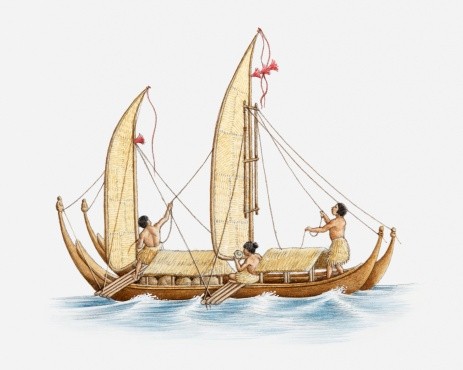
About 6,000 years ago, the ancient Polynesian sailors were thought to have begun navigating the oceans, arriving in territories from Madagascar to Easter Island. Experts are still puzzled as to how these seafarers traveled such long distances, although one theory is that a phenomenon known as Te Lapa may have helped keep them on course.
Mysterious Navigational Method
Ancient Polynesians inhabited many of the small islands scattered in the Pacific Ocean. This makes us wonder how they were able to do so since Easter Island, for instance, is around 1,000 miles (1,609 kilometers) from the nearest habitable land.
For centuries, Europeans attributed this success to mere accident since the ancient sailors did not have any of the complex navigating instruments. They believe that the Polynesians just drifted around until they got lucky enough to find islands to inhabit.
This opinion began to change in the second half of the 20th century when Dr. David H. Lewis published the book "We, the Navigators: The Ancient Art of Pacific Landfinding in the Pacific" in 1972. Lewis conducted an extensive research on Pacific literature before engaging on a 9-month journey along with elderly sailors from nine different archipelagos.
What Lewis discovered was that the traditional Polyneisa navigation was actually a precise science. They employed various techniques such as the use of celestial objects, movements of wildlife, and the changes in ocean swell.
In 1993, cultural anthropologist Marianne George sailed with Lewis to Santa Cruz Island, where they met an elderly traditional navigator named Te Aliki Koloso Kahia Kaveia. Kaveia shared his knowledge about Stone Age methods of navigation, such as the succession of ten main navigational stars and a complex system of understanding the winds.
Kaveia also pointed out something new, a mysterious phenomenon known as Te Lapa. Also known as "The Flashing," Te Lapa is a water-bound light that appears to emanate from land.
Te Lapa was described as a linear light that appears on the horizon, originating from islands and best seen at night. The Polynesian sailors used to follow these lights, which safely guided them toward their destination. According to George, this enigmatic light was used for navigation no more than 120 miles (193 kilometers) from shore and as little as 2 miles (3 kilometers).
What Exactly Is Te Lapa?
Te Lapa may have been a useful navigational tool that helped bring success to Polynesian navigation, but the source of this light remains a mystery.
One hypothesis was proposed by George and Kaveia, who believed that the light flashes might be created from ocean swells as they meet one another near the islands to form crests. According to George, a curved hump formed on top of each swell allows light to travel or become visible on the surface.
Other scientists suggest that the Te Lapa lights may be the bioluminescent glow of marine plankton, which arranges itself to produce straight lines of flashing light. George speculates that dinoflagellates can be stimulated to create pulses of light, which can enable them to align their light emissions from land.
Check out more news and information on Navigation in Science Times.
© 2025 ScienceTimes.com All rights reserved. Do not reproduce without permission. The window to the world of Science Times.











